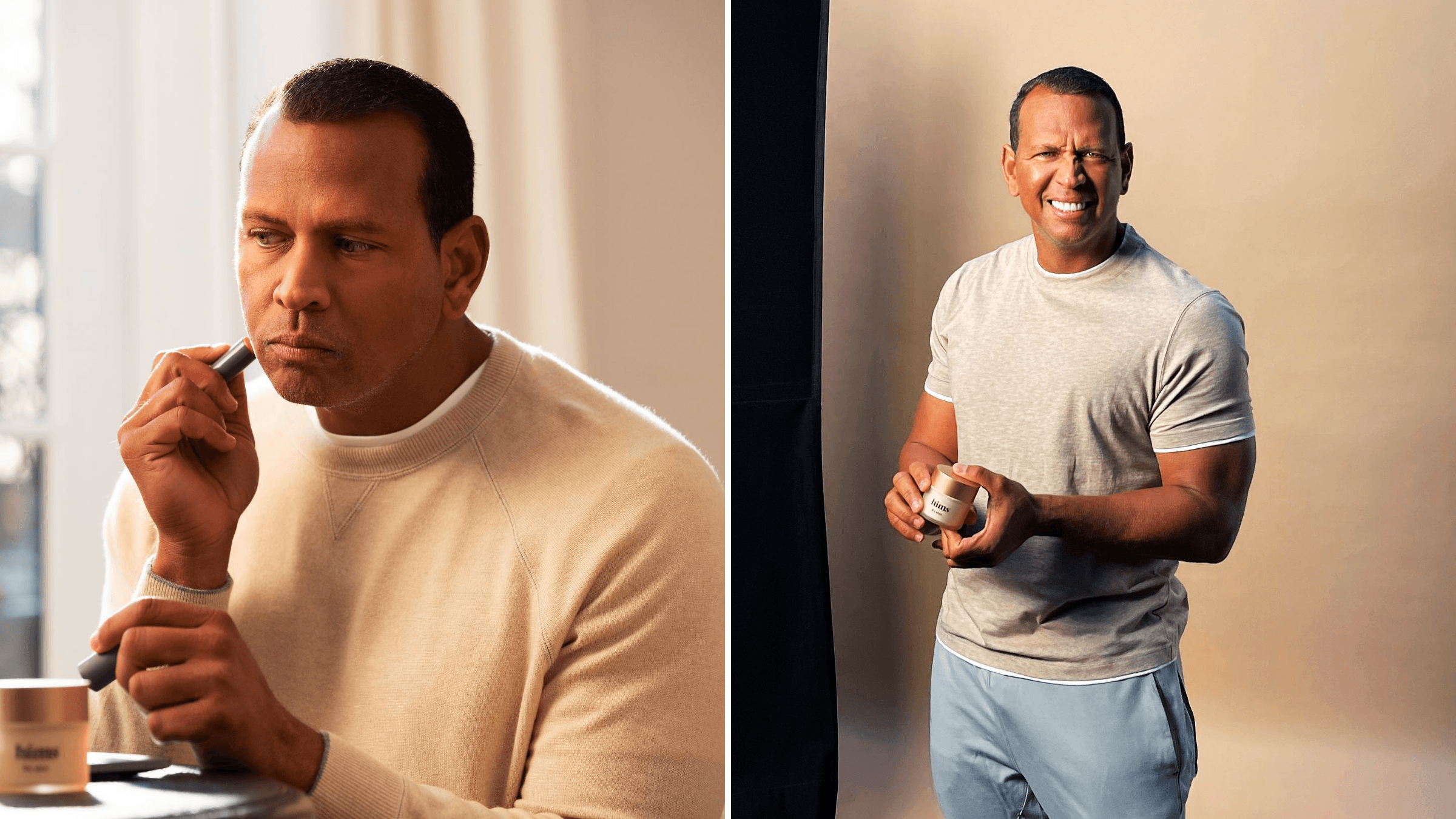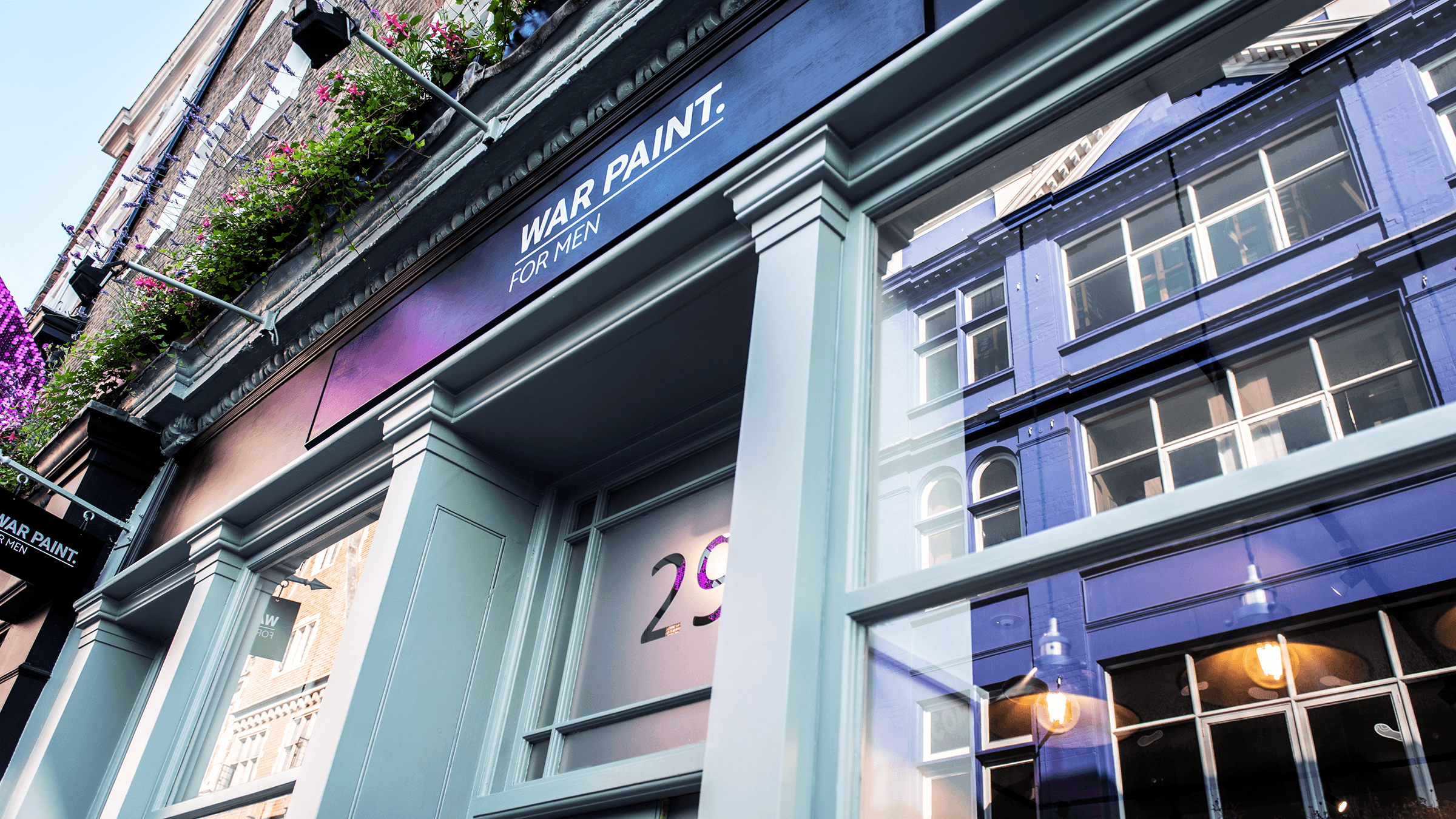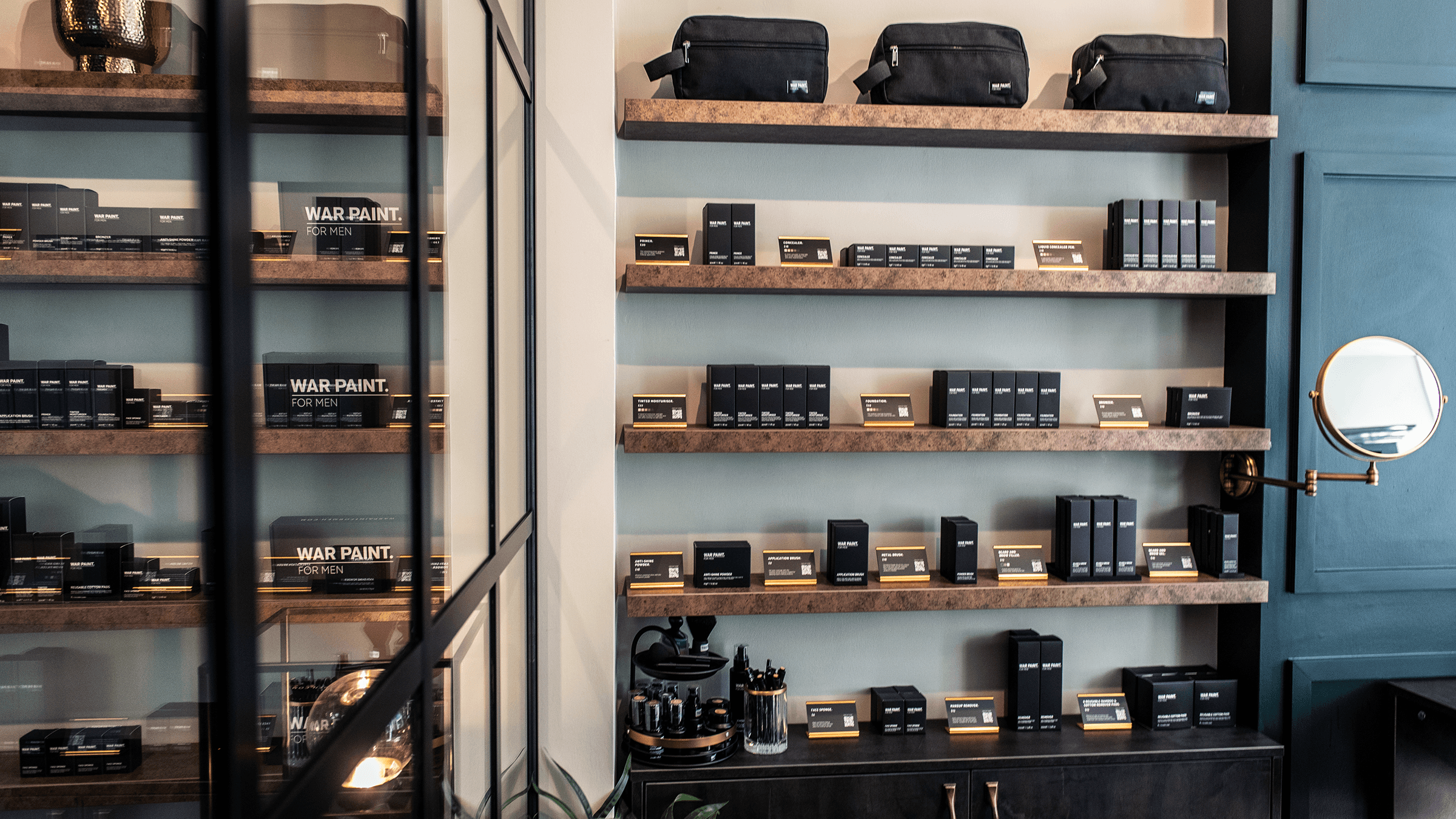In July, Carnaby Street welcomed a new tenant. At number 29, the store has been immaculately fitted with dark wood floors, glass partitions and a velvet green sofa, and on display is an array of makeup and skincare products. The only thing setting 29 Carnaby Street apart from your average beauty store is that all the products on offer are designed for men.
War Paint For Men’s new site has been hailed as the world’s first standalone store for men’s makeup. When once men might have recoiled at the thought of applying foundation or using an eyebrow pencil, today’s consumers are embracing cosmetics as a way for anyone to feel more self-confident.
In many ways, the rise of men’s makeup has been inevitable. Over the past decade or so we’ve seen the traditional notions of masculinity dissolve, impacting everything from fashion and hairstyles to conversations about fatherhood and mental health. As part of this, men today are more open to the idea of makeup, both as a fashion statement and as a tool to boost self-esteem.
“Over the past decade or so we’ve seen the traditional notions of masculinity dissolve, impacting everything from fashion and hairstyles to conversations about fatherhood and mental health.”
Unsurprisingly, Asia is blazing the trail. In South Korea, a recent survey found that about three quarters of men undertake a beauty or grooming treatment. This figure was higher for younger consumers, with 58% of those born after 2000 saying that they undertake “lengthy” beauty treatments at least once a week. In South Korea, this phenomenon can be explained in part by the influence of K-pop, but other markets such as India and Brazil are also driving growth.
In the past few years, we’ve seen this trend take off in the west. Online, influencers are rebelling against the narrow definition of masculinity by posting makeup and nail art tutorials, and on the red carpet, celebrities are donning eyeliner and foundation.

Popstar Harry Styles, for example, is now known in the beauty space for his make-up-enhanced glowing skin, and in June of this year, reports emerged that he was planning to launch his own cosmetics brand. While Harry Styles has a reputation for rebelling against gender norms, former pro-basketball player Alex Rodriguez (who arguably represents masculinity in its most traditional form) is also getting involved. The ex-athlete has partnered with telehealth company Hims & Hers to launch the Blur Stick – a $22 men’s concealer.
In the corporate sphere, businesses are scrambling for share of wallet as men’s cosmetics emerges as an exciting and thriving consumer goods market. In 2018, for example, Chanel launched Boy De Chanel, its first cosmetics range for men. Aiming to “write the vocabulary of a new personal aesthetic for men,” the beauty behemoth trialled the range in South Korea before rolling it out in the US. Tom Ford Beauty has also produced a range for men, and brands such as Charlotte Tilbury and Fenty have launched marketing initiatives showcasing how their existing products can be used on men.
Perhaps more excitingly, we’ve also seen a string of startups explode onto the market. War Paint For Men was founded in 2018, its ethos to “break the stigma that makeup is solely for women,” and to “make men feel comfortable to shout about wearing makeup”. Shakeup Cosmetics is another player in the space, creating products and formulars specifically designed for male skin types.

For now, both international beauty groups and challenger brands are focusing on natural-looking makeup products, which enhance or hide natural features, rather than colour cosmetics. Looking to Asia, we can expect more vibrant products to come to the fore in the year’s ahead.
When it comes to channel, most brands are operating a direct-to-consumer service. While male cosmetics is no longer a taboo subject, discretion and ease of purchase remains high on the agenda (in a recent survey, 56% of UK men said that they wouldn’t feel comfortable approaching a makeup counter, a figure which goes up once men reach 35). Subscription models – giving customers the option to receive products at their door on a regular basis without thinking about repurchasing – are also common.
“Thinking ahead, points of differentiation in retail could be vital as the men’s makeup segment develops, and male customers get more comfortable with shopping for cosmetics.”
Excitingly, businesses like War Paint For Men are working to undo any remaining stigma around men’s makeup. The brand’s new retail offering gives customers the opportunity to ask questions about products through an interactive tool, and match their skin tone to find the right foundation shade. To attract customers through its doors, the business has also partnered with The Lions Barber Collective for an in-store barbers at the back of the shop. Interestingly, and as part of the company’s mission to rewrite rules around masculinity, all barbers have been trained to spot mental health issues and offer support. Thinking ahead, these points of differentiation in retail could be vital as the men’s makeup segment develops, and male customers get more comfortable with shopping for cosmetics.
The rise of male beauty is still very much in its early stages, and there’s all to play for. As a general rule, men are less inclined to follow trends, shop around, or even ask their peers for recommendations, so it’s a race to the finish line to reach and win over this brand-loyal group of consumers. There is no doubt that men’s makeup is the next frontier in the beauty space, and businesses need to get involved or risk being left behind.








